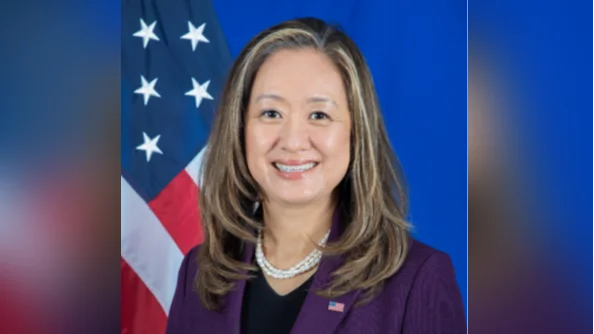At an event in Colombo, U.S. Ambassador Julie Chung addressed attendees at the opening of an exhibition and symposium focused on the Godawaya shipwreck. The site, discovered in 2008 near Hambantota International Harbor, is recognized as one of the oldest deep-sea wrecks found in the Indian Ocean.
Ambassador Chung highlighted the significance of maritime heritage and its role in connecting nations. "It is a privilege to open this exhibition and symposium on the Godawaya shipwreck, a site that for centuries lay hidden beneath the sea and has now been brought to light through perseverance, shared expertise, and collaboration," she said.
She noted that researchers faced significant challenges working 33 meters below sea level to document and preserve the wreck. The project received support from the U.S. Ambassadors Fund for Cultural Preservation (AFCP), which contributed to scientific documentation and 3D modeling efforts. This work allows both experts and the public to access information about the site.
Chung recounted her own experience visiting the shipwreck: "I will never forget the honor of diving to the site myself. To see with my own eyes the remains of a vessel that once carried trade across these waters was both humbling and inspiring. It reaffirmed what history has long told us: Sri Lanka has stood for centuries as a vital hub of connection in the Indo-Pacific."
She emphasized ongoing cooperation between Sri Lanka and the United States in safeguarding maritime security and supporting open commerce routes essential for prosperity, cultural exchange, global trade, and security.
"The Godawaya shipwreck reminds us: secure sea lanes have powered commerce for centuries — and they continue to protect American and Sri Lankan interests today. This project is not only about the past. It is about what binds us together in the present, and how we prepare for the future," Chung stated.
Artifacts recovered from the wreck—such as pottery, beads, copper ingots—offer insights into historical technologies, economies, daily life, as well as Sri Lanka’s role at historic crossroads of trade.
Chung expressed gratitude toward local partners: "I want to extend my deepest gratitude to the Central Cultural Fund and Maritime Archaeology Unit whose dedication has brought this history to surface." She also mentioned multidisciplinary research resulting from artifact analysis being presented at this symposium.
The event included presentations on topics such as cargo analysis, woodborer activity affecting decomposition processes at depth, studies on stone beads/pottery finds, provenance research on copper ingots; Dr. Jason Raupp from East Carolina University joined virtually to discuss U.S contributions globally in maritime archaeology.
According to Ambassador Chung's remarks over 24 years AFCP has supported more than 1,000 projects across 140 countries; since 2001 there have been 17 heritage preservation projects completed by AFCP within Sri Lanka alone—including sites like Rajagala Buddhist monastery & Thuparama Image House in Polonnaruwa—which aim at strengthening identity & building international understanding through preservation efforts.
"A nation’s heritage is one of its greatest treasures. I am proud that United States & Sri Lanka stand together preserving it," she concluded.
Artifacts displayed during this event are expected eventually to be part of a permanent exhibit at Galle’s Maritime Archaeology Museum.

